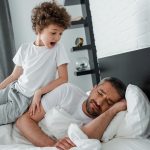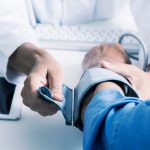Notes from the Field: February, 2021
JARED L. ZEFF, ND, VNMI, LAC
The following is not an article prepared for a medical journal. Not every statement of fact is cited or referenced. This is a commentary on the medicine, a running set of observations about practice in the field. It’s not meant to be a peer-reviewed presentation; rather, these are notes and thoughts from a practicing naturopathic physician, a primary care doc in general practice.
Simplified Homeopathic Prescribing
Homeopathic medicine is a rich complex of many possibilities, based upon the concept of the similimum and the minimum dose. The genius of Samuel Hahnemann opened up to us a new field of therapeutics that is both powerful and gentle. I have seen severe pain resolve within a minute of giving the appropriate remedy. But homeopathic prescribing can be daunting given the number of potential remedies and the confusion that can exist regarding the complexities of case-taking. I have tried to simplify this, as have others, in writing about some simple strategies for prescribing. “Small Remedies” may be considered one of these, and it is among the simplest. Small Remedies are simply remedies that have only 1 or 2 rubrics that have been demonstrated from their provings.
Here is an example of such a remedy. Last Friday, a woman came to see me for a regularly scheduled visit. We had been working on some chronic problems, which had been improving, and it was now time for the next visit. She had missed her last appointment, about 1 month prior. She apologized, and told me that she was newly pregnant and that this had created new problems for her. One of these was that she had been continually nauseous. As she was sitting across from me, her distress was obvious. She told me that she was usually nauseous throughout the entire first 3 months of her previous pregnancies. I excused myself from the office, telling her I was going to my office medicinary to get something for her. I returned in a minute with a vial of Symphoricarpus 30c, and put a pellet into her mouth. Within a minute, she appeared to ease. She asked, “What was that? My nausea is gone!”
Small Remedies
Symphoricarpus racemosa
This is the entirety of Clarke’s entry for Symphoricarpus in his Dictionary of Practical Materia Medica:
Symphoricarpus racemosus. Snow-berry. N. O. Caprifoliaceae. Tincture of fresh ripe berries.
Clinical. -Pregnancy, sickness of.
An account of Smpho. r., by E. V. Moffatt, is quoted in New, Old, and Forgotten Remedies:
S. P. Burdick gave the tincture to a lady, who said its effects were “precisely like the morning sickness” she used to have during pregnancy. On other women it produced effects varying from qualmishness to intense vomiting. Moffatt gives these as the leading indications: Qualmishness and indifference to food. Deathly nausea; vomiting continuous, violent retching. One patient was > lying on back. (No particular morning < was observed.)
Moffatt reports this case:
A young lady, three months advanced in her first pregnancy, had deathly nausea, with vomiting and retching so prolonged and violent as to produce haematemesis. The smell or thought of food was repugnant in the extreme. Moffatt gave Smpho. 200 (obtained from Dr. Burdick) in the middle of a violent paroxysm. In a few minutes she stopped vomiting, and said she felt soothed and quieted all over. In half an hour nausea began again, but a few pellets checked it promptly and she fell asleep. A few more doses completed the cure. A relapse following over-exertion a month later was speedily remedied by Smphoricarpus.
Boericke similarly lists only this 1 use for the remedy: It is simply a good remedy for treating nausea or vomiting of pregnancy.
Hekla lava
Boericke says of the lava from Mt Hekla,
Marked action upon the jaws. Of great use in exostosis, gum abscess, difficult teething. Nodosities, caries of bone, etc. Osteitis, periostitis, osteosarcoma; rachitis. Tumors in general. Bone necrosis. Necrosis and sinus after mastoid operation.
Face. -Ulceration of nasal bones. Facial neuralgia from carious teeth and after extraction. Toothache, with swelling about jaws. Abscess of gums. Enlargement of maxillary bone. Cervical glands enlarged and indurated.”
Mt Hekla is an active volcano in Iceland. The story goes that a homeopath was vacationing in Iceland around the turn of the last century. He noticed that the cattle grazing on the slopes of the mountain all had exostoses of the jaw and the long bones. Because he was a homeopath, he took a sample of the lava rock from the slopes and made it into a remedy. He found it useful in treating carries of the jaw and bones, and exostoses. He published his findings, and Hekla lava came into general homeopathic use.
I have used the remedy when I encounter such things, especially those little rounded exostoses on the inner jaw that one can see during an oral examination, when the patient lifts their tongue. I have seen some success with this remedy in the treatment of these findings, as well as in the treatment of osteomyelitis, though that has required a more complex treatment of which the Hekla lava is only a part.
Aesculus hippocastanum
I presume that Aesculus is a familiar remedy to most of you. I use it often, because its primary application is for a common problem. It is primarily a remedy for painful or irritated hemorrhoids, though I have also found it useful in the treatment of other varicosities.
I recently saw a woman who had significant varicosities of the sublingual veins. I had her take Aesculus for 1 month, once daily at the 6c potency, and a month later the veins were almost normal. After a second month of taking the remedy, they were normal. I tend to prescribe the 200c potency for acute pain, repeated as needed, and the 6c repeated daily to stimulate more long-term healing.
Blatta orientalis
This remedy is made from the common cockroach (“…a trituration of the live insect.”). Clarke reports the following:
…Found accidentally to relieve asthma in a patient who took tea in which a beetle had been infused; it has since proved to have a wide range in asthmatic cases…
It has often been the case that accidents or chance events, such as the vacationing homeopath in Iceland, have given us some wonderful medicines. This is such a case.
A couple of months ago, I was treating a man for asthma. Usually, I can prescribe a remedy that will work well in the acute situation while we are working to clear the underlying causes. In his case, none of the remedies I had chosen were helpful. While wondering about this case, I recalled the cockroach. I gave him a dose of Blatta 30c while we were talking in my office, and within a minute he noted that it was easier to breathe. I sent him home with some, to use before turning to his inhaler. I find that the correct remedy will replace the inhaler while we are eliminating the causes. In his case, that remedy turned out to be Blatta.
Euphrasia
Boericke begins his little treatise on Euphrasia thus:
Manifests itself in inflaming the conjunctival membrane especially, producing profuse lachrymation. Patient is better in open air. Catarrhal affections of mucous membranes, especially of eyes and nose. Profuse acrid lachrymation…
The common name for Euphrasia is “eyebright,” and it is definitely an eye remedy. It is excellent in many conditions of the eye, especially where inflammation is present. It also generally works well in inflammation and swelling of the eyelids. In this regard, it is useful in hay fever, conjunctivitis, iritis, conjunctival lesions, xerophthalmia, and other conditions that affect this essential organ.
I use Euphrasia in any potency, including the tincture form. I make eyedrops for my patients. I put 10 drops each of Euphrasia, Hydrastis, and Hypericum into a 1-ounce bottle. Then I fill to 1 ounce with sterile normal saline. I always test eyedrops in my own eyes first. Then I dispense them to the patient: 1-2 drops in the affected eye, as needed.
Cina
Although Cina takes up 2 pages in Boericke, and 4 pages in Clarke, I think of it as a small remedy because, as Clarke notes,
… It is pre-eminently a worm medicine, as it causes all the symptoms which characterise helminthiasis both mental, nervous, and bodily. It corresponds more to the effects of lumbrici than to those of other worms.
I think of Cina primarily with anal itching, especially if there are worms present, but it has other symptoms as well. The symptoms, as Clarke noted, are predominately those of a parasitic infestation: twitching and jerking, itchy anus and nose, constantly picking the nose or scratching the ears. Also, a sense of movement in the abdomen, especially around the navel.
I have found the remedy useful in eliminating pinworms, but I do not understand this. How can a remedy, which is an energetic signal to the body, eliminate the presence of a physical parasite? For many years I did not use it with actual worms present, because of this concern. However, after seeing it actually eliminate the worms, I lost that caution. I have now seen it work many times to eliminate intestinal parasites. At least, after its use, they seem no longer to be there or to bother the patient. It would be a good study, if it has not already been done, to perform a comprehensive stool parasite test before and after a course of Cina. I would like to know.
Serum Anguillar Ichthytoxin
Many years ago, when I was still young in practice, a young couple brought me their 7-year-old daughter. She had been given an extensive course of prednisone, which had damaged her kidneys. She was now going to be put on dialysis while awaiting a kidney transplant. I had no real idea what to expect, and as I began my inexperienced treatment of her, I decided to call Dr John Bastyr. He insisted I call him John, which I was reluctant to do, though it became easier over time. He was always available to give me recommendations, and I often needed them. (By the way, I invite any of my young colleagues to call me as well, and to call me Jared, and by doing so, I can return the favor John did for me.)
In those days, I was often on the phone to those older doctors who were willing to advise me, a young colleague. I asked Dr Bastyr what I could do to treat this girl, and what hope there was for that help to be effective? In his kindness, he presumed I would know what he was referring to when he said, “Have you tried Ichthytoxin yet?” He suggested I read about it. “Serum Anguillar Ichthytoxin,” he repeated.
I thanked him, read about it, ordered some, and gave it to her. I also gave her a diet, a long course of constitutional hydrotherapy, and some kidney tonic botanicals. She made it to about age 13 with her kidneys, without dialysis, before she needed the transplant. As she hit puberty and began to grow into an adult body, her minimal kidney function was not sufficient to maintain a significantly increased body mass, but this had been anticipated. She did fine with the transplant. Last I heard, she was 18 and in college.
Boericke relates,
… Whenever the kidney becomes acutely affected, either from cold or infection or intoxication, and the attack is characterized by oliguria, anuria and albuminuria [nephrotic syndrome], we will find the eel’s serum eminently efficacious to re-establish diuresis, and in rapidly arresting albuminuria…
Serum Anguillar Ichthytoxin, the blood of the electric eel, called “Ichthytoxin” by my older colleagues, is primarily a remedy for kidney failure. Read about it, as John advised me.
Robinia pseudorobinia
One more remedy for now. Although it would be interesting to write about Malandrinum or Latrodectus, I think it is more practical to tell you about Robinia, if you are unfamiliar with it.
Robinia pseudorobinia, also referred to as Robinia pseudoacacia, is not exactly a small remedy; it takes up 3 ½ pages in Clarke, though only half-a-page in Boericke.
As Clarke relates,
… poisonings that have been recorded have been due to eating the beans or chewing the bark. Of thirty-two boys so poisoned…
It is one of those remedies discovered from its poisoning symptoms. Provings gave a more comprehensive picture of its action, but the outstanding feature is acidity of the stomach. It is a remedy for heartburn, especially worse at night, and of GERD, in general. I find it reliable in that application, and use it often, and think of it only for that, and therefore I think of it as a small remedy.
Conclusion
This was a brief excursion into 8 little remedies that I have found useful and therefore use often. One of the delightful things about our medicine is the breadth of possibility, and, along with that, the very effective yet harmless nature of this approach. What a privilege it is to have this knowledge and use it to help ease the suffering of our fellows.
Respectfully,
Jared L. Zeff, ND, VNMI, LAc

Jared L. Zeff, ND, VNMI, LAc is a licensed doctor of naturopathic medicine and a licensed acupuncturist. In addition to functioning as Medical Director at the Salmon Creek Naturopathic Clinic in Vancouver, WA, Dr Zeff taught on the faculty at National University of Natural Medicine in Portland, OR, where he was also Dean from 1988 to 1993, and holds a professorship in Naturopathic Medicine. Dr Zeff is a graduate of the University of California, NCNM, and the Emperor’s College of Traditional Oriental Medicine. He, along with Pamela Snider, is the author of the AANP’s Definition of Naturopathic Medicine, and the Therapeutic Order concept.










